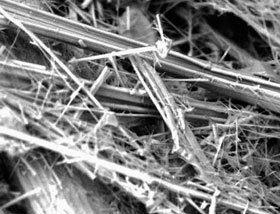
The story of asbestos is a cautionary tale for tomorrow's materials scientists and innovators. Asbestos has been used in thousands of products in innovative ways for a long time, because of its strength, durability, and resistance to heat and fire. In the construction industry, it has been used extensively in ceiling and floor tile, pipe insulation, firebrick, window caulking, duct connections, and spray-on fireproof insulation.
Today, however, the mere mention of the word can cause panic—for good reason. Since the early 1940s, millions of people have been unknowingly exposed to asbestos fibers, causing thousands to develop lung cancer, mesothelioma, and asbestosis, which, in turn, has spawned new legal and removal specialties.
There's a cruel irony in asbestos: When it's contained and controlled (the fibers remain bonded and do not become airborne), it protects people and property better than any other material. But when it's out of control, it's an invisible killer. The same can be said of many products and most chemicals.
Now that the risks regarding asbestos are known and safety measures prescribed, why isn't anyone looking for new applications? The material hasn't been banned. It continues to be used in many products, and the benefits of asbestos are many—high tensile strength, chemical and thermal stability, high flexibility, as well as low conductivity. To date, there are no comparable substitutes. Organic fibers, plastics, and glass wool fibers are used, but these materials may turn out to be as hazardous as asbestos, and they do not work as well.
Innovation is stymied by many factors—fear of eternal litigation should a new product fail or be improperly used, and the weight of stringent regulation. It seems unlikely that tomorrow's scientists will be able to remove all risk for universal asbestos application, but they're going to try.
